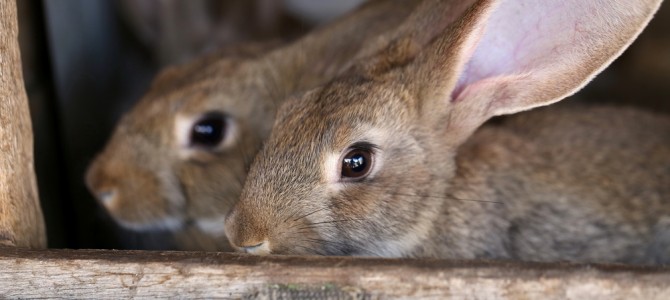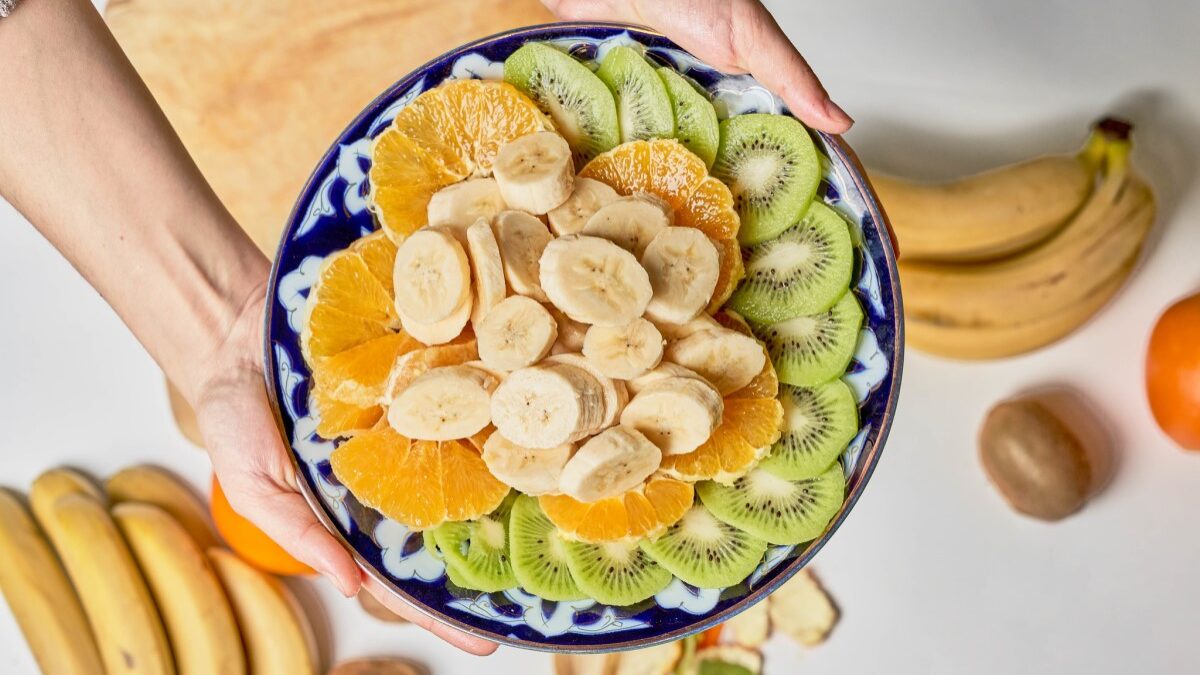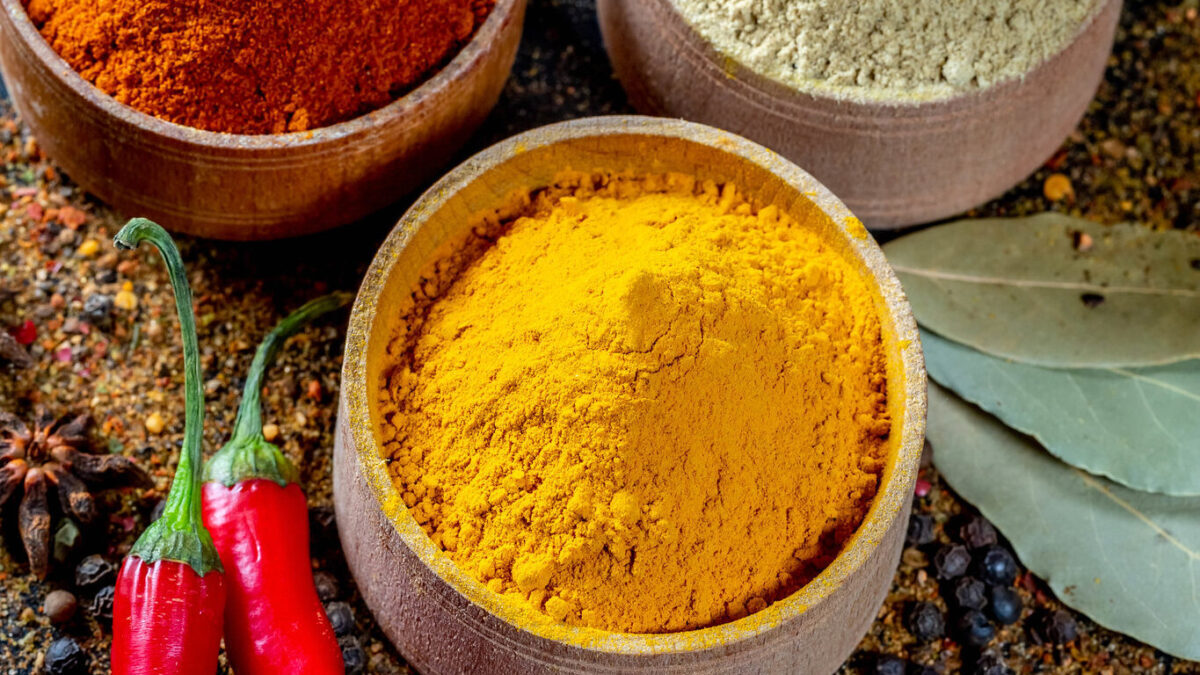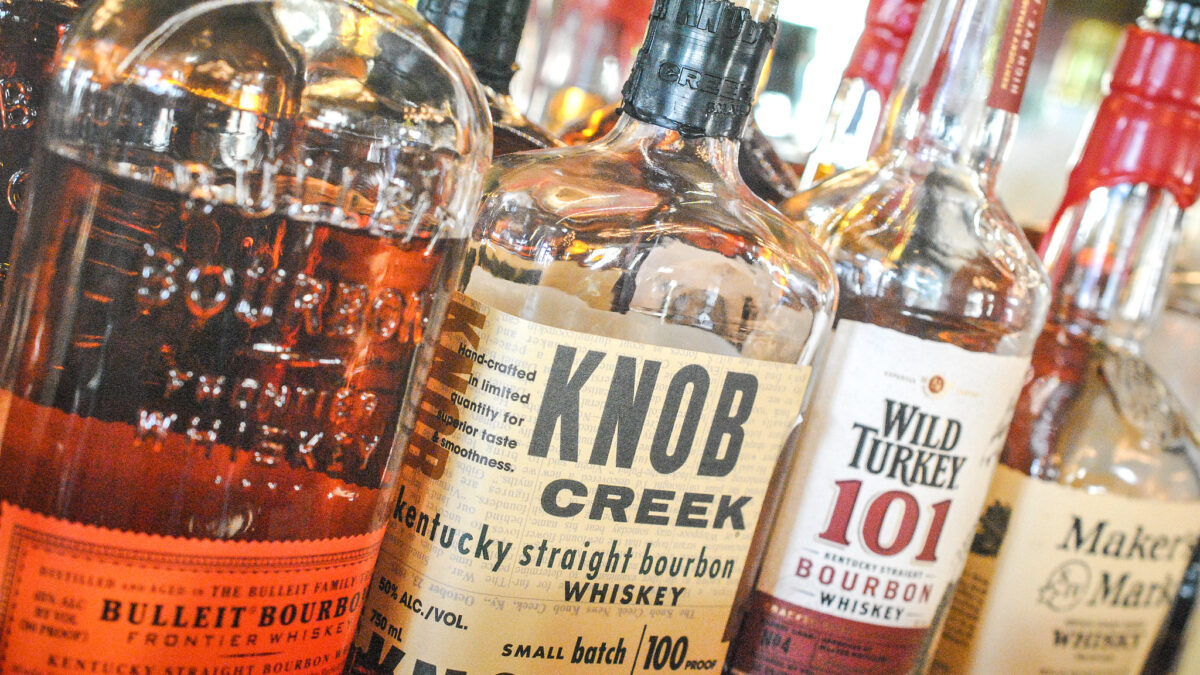
Recently, a teacher in Idaho found himself in hot water after killing and skinning a rabbit in front of his tenth-grade biology class. The instructor was attempting to show his students “how food gets to the table,” but the graphic, visceral lesson upset some parents.
Humans eat meat, and meat involves killing animals. People have been struggling with the moral and philosophical questions surrounding this fact for thousands of years. Was the teacher wrong to demonstrate the uncomfortable but commonplace way by which animals become food? Should people be more aware these days of how meat gets to their plate? Here, some editors and contributors of The Federalist weigh in on the ethics of eating meat and knowing where it comes from.
Gracy Olmstead: I grew up in Idaho, and this sounds like something that would happen in my hometown. I love the idea of a farmer showing children how food gets to the table: many people are blissfully ignorant of the blood and gore that are naturally part of food consumption. Our nicely sanitized interactions with buying meat—whether it’s packaged chicken breast at the store, or a Five Guys burger—simplify the full picture. This farmer was providing kids with more than a simple biology lesson. He was showing them the gravitas of food consumption.
That said, much here depends on the farmer’s attitude. Was he glib or nonchalant about killing the bunny? I think we should be careful and considerate in how we take life—and we understand when young people struggle with seeing death firsthand. Walking into a classroom unawares and seeing a bunny get its neck snapped would have been shocking and scarring for me, as a high schooler. That doesn’t necessarily mean high schoolers shouldn’t see it, but such a harsh disruption of the sanitized, safe classroom setting would require both seriousness and sympathy on the part of the teacher/farmer. For the ignorant and unsuspecting, this would’ve been an incredibly difficult lesson—even though it’s a reality most people throughout time have had to deal with. Sometimes giving a dose of reality requires mercy and understanding.
Mollie Hemingway: I am a defender of eating meat but I think that it’s actually incumbent on meat eaters to understand how, you know, bacon gets on the plate. I grew up in rural areas so I was a bit closer to the action than many people, but I’m kind of surprised this caused a stir in Idaho. We dissected a rabbit in high school and everyone was very dramatic about it (Colorado) but we students could handle it just fine.
I remember the first time I took my niece fishing and she caught some trout and then we were cleaning it and it turned out the fish had all these eggs in it and she was so sad. I can clean fish really well. I am not terribly interested in dressing animals, however.
Leslie Loftis: I confess, I find the outrage disproportionate to the act. Primarily, respect for the animals we eat demands that we acknowledge what must be done for our nourishment. It is a horrible disrespect to act like meat comes from a grocery aisle. The lesson is harsh, yes, but the reality is harsh. My other concern is that these are mid-teen “children.” I understand that this was a shocking lesson, but unless the teacher was gleeful or macabre, it shouldn’t have been shocking for 16-year-olds. I also understand the parents’ complaints that they were not informed of this lesson beforehand. But I also suspect why. These children are 16 years old, and if the lesson shocked them, that is because they have been overly protected from the reality of food. The parents likely wouldn’t have allowed the lesson, even knowing they had the option to leave the classroom.
Rebecca Cusey: So my cute little 14-year-old daughter came to us and said she wanted to kill something. After briefly panicking, we listened and she really felt like if she was going to eat meat, and she really believes in eating meat, that she should be willing to know and understand the gore behind it. It was kind of morally important to her.
We are going to try to take her hunting with a friend. Just interesting that it was part of her moral framework she’s developing.
Amy Otto: Did anyone warn the bunny?
I have to admit, I was the girl in my college biology classes suggesting we team up on live frog dissections because it seemed wasteful to perform three basic steps per student, thus allowing those of us not desiring to be surgeons to observe the frog pithing to keep them alive while we manipulated their nervous system with various chemicals. I wasn’t opposed to the killing; it was more, “Do we need to take out 25 frogs to basically observe the same exact reaction?”
I’ve only fished, but that was great. California has tuna accessible off the coast and I loved that. I did let a nice gentleman dress the fish I caught, though. Tried the sushi-grade portions right on the boat. Amazing. I get the satisfaction a hunter must have in catching and preparing from end to end. I’m surprised in some ways that hunting isn’t sold as the ultimate in locavore, sustainable food sourcing. If only the Portlandia skit with the chicken farm had the restaurant customers kill their meal first.
Georgi Boorman: I think this is why I find chicken nuggets so disturbing. They don’t even resemble meat, as in, chicken muscle. I want to eat chicken muscle, not squishy white nuggets.
When I was eight or nine, I saw two pigs get butchered. We owned one of them, but it had been raised on the neighbor’s property. I remember hearing the gun shots, POP POP, as we were on our way over to watch. The guy disemboweled the pigs with a knife and his BARE HANDS, and he rolled away the intestines in a trash can as soon as he pulled them out. The smell was horrible, and unlike anything I had ever smelled before. Not like “meat” smells.
My sisters and I had wanted to name it Marshmallow, but my dad flatly objected and insisted that if we were going to call it something, it would be Stinky. Good on him for not letting us get attached. It was yummy pork, especially the bacon.
Rich Cromwell: Almost all of us have that friend who had a childhood epiphany and became a vegetarian upon discovering bacon, ham, and pork all come from the same magical animal they’d come to love during that trip to the petting zoo. I never had such epiphany, though it could be because I grew up with a father who generally considers buying meat at the store to be a mark of failure. He preferred projectiles and fishing poles to snapping necks, but growing up it was common to see food transition from its more mobile form to more sedentary and seasoned.
I never developed my father’s passion for hunting and I only get to go fishing about once per year. My older two kids, ages seven and five, have subsequently only been fishing. Except for that time they helped my dad retrieve squirrels he was shooting in the backyard. Partly he was helping collect squirrels for participants in the Squirrel Cook Off. Mostly he was tired of the little bastards eating his tomatoes. Regardless, the girls took this experience to heart, then ate some of the squirrel at the cook-off. In other words, they are quite comfortable with knowing the origin of their food despite my own failings at providing meat for the house.
The kids also benefit from our friendship with the owners of this restaurant, which focuses on farm-to-table and using every edible part of an animal. Every edible part, hence the name. From snout to tail, nothing is wasted. We especially enjoy eating dinner together. Chef Rob, a madman who likes to take days off from cooking at his restaurant to cook at home, does not cater to the little ones with hot dogs or nuggets. They get meat, from any part of the magical animal, just like the adults. This is how we came to be fans of smoked jowl and how I came to terms with another of my failings as a southern man. That it took almost 40 years to come to appreciate jowl may be the blemish that keeps me from entering the Pearly Gates.
Regardless, in an attempt to rectify this and to see how far I can push my kids before they swear off meat, I recently fried up a few pounds of jowl. (Hey, there are five of us. You don’t fry some bacon, you fry all the bacon, even if it’s jowl.) My five-year-stood at my feet as I finished cooking the eggs, looked up at me, and asked for another piece of bacon. “That’s not bacon, honey, that’s jowl.” “What’s the difference?” “Bacon is made from a pig’s belly. Jowl is made from a pig’s face.” “Okay, I want more.”
It’s not the kids who are unable to handle the realities of food and how it gets from the farm or the woods to our plates, it’s the adults. Maybe we should stop coddling the kids and instead remember that until recently it wasn’t a radical notion to give them the education they need to avoid getting freaked out and becoming vegetarians. Because vegetarianism is, after all, cruel to humans and education should help us make the world a better place.
Scott Lincicome: The day I realized that my mild-mannered, church-singing dad, who grew up a poor farm boy in Kansas, was a badder man than, I was about 15 or so. While doing some weekend yard work, we discovered a large nest of baby rabbits along the side of our house. We’d had a pretty bad problem with rabbits in our suburban Dallas yard (eating everything, pooping everywhere, etc.), so without flinching my dad turned to me and said, “Go get the shovel.” Clueless, I ran, grabbed it, and gave it to him. He then said, “Go inside” and, as I’m walking away, began to beat the living crap out of a dozen or so baby rabbits. Having been totally citified by this point in my life, I was pretty shocked, though now in retrospect I certainly shouldn’t have been. He grew up wringing chickens’ necks, cleaning dinner, killing vermin, etc. And the rabbits were vermin. End of story.
I, on the other hand, had been totally wussified in the burbs. Alas.
Robert Tracinski: I grew up in a suburban type of environment, and although it was in the middle of the Corn Belt and the big local employer was John Deere, I never went hunting, never learned how to skin a deer or gut a fish, and never saw cows, chickens, or pigs slaughtered. But here’s the thing: I was able to project, intellectually, that the animals were indeed being killed. It doesn’t take a lot of mental effort to figure out that the slab of meat in your mouth is part of an animal.
When I first encountered the animal rights advocates—who were even more of a fringe group back then—I was also able to project what it would mean if we had to live down to their restrictive conception of human life. I recognized the obvious double standard of a movement that wanted humans to give up being omnivores but who weren’t rushing to prevent lions from running down gazelles. It was pretty clear that making out humans as the bad guys was the real goal, and that this wasn’t going to lead to anything good.
My point is that we shouldn’t make too many excuses for people who grew up in the suburbs and are suddenly shocked that animals are being killed to make their food. It is not as much a failure of experience as it is a failure of basic thinking skills. It comes from being moved, not by reason, but by emotional appeals—and pretty shallow ones, at that.
John Daniel Davidson: In 2009, novelist Jonathan Safran Foer published “Eating Animals,” a nonfiction book about factory farming that delves into the philosophical and cultural questions surrounding industrialized meat consumption. Basically, it’s an argument against eating meat in modern America. Foer, a prose stylist who specializes in a kind of conversational, quasi-literary kitsch, paints a gruesome picture of the hapless animals we eat: cows skinned and dismembered while still conscious, unwanted chicks sucked through a series of pipes onto an electrified plate or sent alive through a macerator. That sort of thing. Like the 2009 documentary Food, Inc., which explored the largely unseen world of corporate farming and agribusiness in America, Foer’s book is meant to startle us out of our collective passivity and force us to grapple with the moral and philosophical questions around our consumption of animals.
These efforts, and the arguments they advance, are for the most part rather compelling. We should know something about where our food comes from, after all. If we want to eat meat, we should be realistic about how we get it. Americans consume more meat than any other country and our per capita consumption of meat has risen over the last century (although in recent years it appears to be dropping).
The problem is, like Foer and Food, Inc., we often focus our attention too much on massive agribusiness and the macabre sensationalism of industrialized slaughter that comes with it. That skews our understanding and can lead to the conclusion that there’s no humane or ethical way to eat meat, which simply isn’t true. The truth is more complicated, and personal. I grew up in Alaska, where hunting and fishing—and hence, killing and dressing animals for consumption—are a part of everyday life. I’m also a third-generation commercial fisherman. My family has been harvesting sockeye salmon from Alaska’s Bristol Bay since the early 1950s. Bristol Bay is the largest wild salmon fishery in the world, accounting for about half of all wild salmon sold on the global market. When you go to Whole Foods or your local organic food co-op and buy a fillet of “Wild Alaskan Sockeye Salmon” for $18.99 a pound, chances are it came from Bristol Bay, where a commercial fisherman caught and sold it to a processor for about $1.20 a pound.
I’ve fished seven seasons in Bristol Bay, as a crewman on a gillnetter. A Bristol Bay gillnetter is pretty much what it sounds like: a vessel that catches salmon by trapping them by the gills. The net is about a quarter-mile long and spools out off the stern from a big drum on the deck. When you bring it back on board (we use hydraulics for that) and the fish are coming over the rail, most of them are alive. You have to get each one out of the net by hand, quickly, sometimes frantically, which is rather violent. Sockeye range from five to ten pounds, and when you pull them fresh out of the ocean they thrash about with some force. Since they’re caught by the gills, to get them out you usually have to break the gill plate, which often rips the gills and causes them to bleed out. When you bring ten thousand pounds on board in four hours, as sometimes happens, the deck becomes a bloody, gory mess. The fish-holds teem with writhing salmon whose faces have been ripped off while still alive. Scales, teeth and eyes are strewn on the deck and stuck to your face and hair. Blood is everywhere.
This is not the image we have of harvesting wild salmon from a sustainable Alaskan fishery. Yet that’s the reality. On the boat, we sometimes joke that it’d be a lot harder to clear the net if the salmon blinked, or had fur, or were puppies. Lucky for us, they die quietly, unblinkingly. The point is that eating animals involves killing them, and killing them is necessarily violent. But we shouldn’t shrink from that violence, or assume that all violence is equal. For all the blood and gore, harvesting wild salmon is arguably less violent and more ethical than an industrial slaughterhouse.
But if we’re going to eat meat, we ought to know something about where it comes from and what was involved in the animal’s killing. We should teach our kids about it, too. If at the end of the day we can’t reconcile our conscience with the violence required to eat animals, then we should stop eating them. But that will be a personal choice—informed, one hopes, by some knowledge and some experience of what eating animals entails, whether it’s wild Alaskan salmon or KFC.
Daniel Payne: Perhaps the greatest tragedy of industrialized agriculture—above the ill health effects, the Faustian economics, and the environmental degradation—has been the severing of the once-common and intimate interaction between man and the food he consumes: the tremendous caloric output of modern agribusiness, its convenience, and its inarguable benefits have also come with a great cost, in which people are wholly divorced from what nourishes them daily. This is, I believe, a loss for humanity in the long run: to outsource the production of most of our food to distant people unconcerned with us and our well-being feels dangerous and foolhardy, and for all the genuine good it’s done, it seems like a perverse gamble that will probably not end well for anybody.
So I am impressed and supportive of this farmer-teacher in Idaho, who killed and skinned this rabbit “to show the 10th grade students how [food] gets to the table.” Being Idaho, many of these students may already be aware of how food goes from farm to fork—but then again many of them may not, and may have learned something important about the way the world works, and how food becomes food. I am not sure quite why “a parent complained” about the lesson, or why the teacher is “facing disciplinary action. Unless there were vegetarians or vegans in the classroom, I am baffled as to why there would be anything to complain about: where do these people think food comes from? Why do they feel the need to be upset over one of the basic tenets of human existence? So we have a perfect illustration of the insanity of the modern food system, which mandates that it is fine for someone somewhere else to kill a rabbit, but unacceptable for another to do it closer to home. What good can ultimately come out of such a twisted and bizarre value system?









